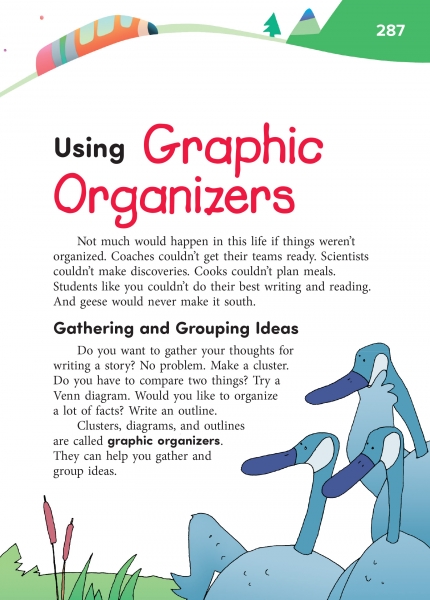Page 287 from

Start-Up Activity
On the board, draw a diagram of geese flying in a V formation, like the one on page 286. Then ask this trick question: "Have you ever noticed that when geese fly in a V formation, one side of the V is always longer than the other? Do you know why that is?" After students offer suggestions, say, "It's because there are more geese on that side." Point to the diagram to help students get the joke.
Tell students that using diagrams and other graphic organizers helps them "see" what they "think." These strategies let students visualize ideas and sort them out, strengthening their thinking and learning.
Think About It
“I hear and I forget. I see and I remember. I do and I understand.”
—Confucius

Start-Up Activity
On the board, draw a diagram of geese flying in a V formation, like the one on page 286. Then ask this trick question: "Have you ever noticed that when geese fly in a V formation, one side of the V is always longer than the other? Do you know why that is?" After students offer suggestions, say, "It's because there are more geese on that side." Point to the diagram to help students get the joke.
Tell students that using diagrams and other graphic organizers helps them "see" what they "think." These strategies let students visualize ideas and sort them out, strengthening their thinking and learning.
Think About It
“I hear and I forget. I see and I remember. I do and I understand.”
—Confucius
